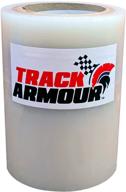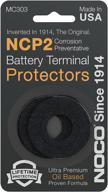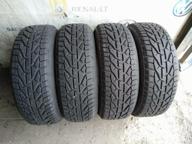
Review on 🔧 Transform Rust with Rust-Oleum Automotive 248659: Powerful 8-Ounce Rust Reformer Bottle in Sleek Black by James Daniels

Liquid or Spray, You Need to Know
Rust-Oleum manufactures several products with the Rust Converter label. When I was writing this review, the list above contained many options, including choosing between liquid and aerosol. While both liquid and aerosol are referred to as Rust Reformers, the products are fundamentally different. Accordingly, understanding the differences will likely help you choose a more appropriate product. It's also worth noting that while these are two fundamentally different products, there are at least five or six different labels and items. Being confused I called Rust-Oleum to clarify and answer some questions. The information below is based both on my usage and on information provided by their technical staff. It's also worth noting that both products come with the identical phrase "Instantly converts rust into a protected paintable surface". Regarding the labels, it's worth noting that Rust-Oleum packages some products into more than one product line. The products listed above have the label used by their automotive paint department. Fluid: I've been told that this fluid is an excellent product for converting or converting rust. The fluid is water-based and contains water-based chemicals that react with rust, converting it from chemical rust to another iron oxide-based compound with different physical properties. So in that regard it really gets rid of rust. The product is milky white out of the can and turns almost black (indicating conversion) after drying on rust and is almost transparent elsewhere. At the time of writing this, the 8 ounce bottle was identified by the number 248659 on the back label (not to be confused with the number on the front label, which is the label number). The same product in the housewares department has a label with a picture of a chair and part number 238433. There is also a different part number in a different shaped 8 ounce container that also looks like the same product. This part number is 7830730. As far as I can remember the staff didn't know the part number and assumed it was the same product intended for a different segment of the paint market. And there's also a gallon size, part number 3575402. Aerosol: I'm told that aerosol stops rust by basically encapsulating it, preventing water from causing further rust. This seems to contradict the phrase "Instantly turns rust into a protected paintable surface". However, this characterization is consistent with a review someone else wrote about, in which the reviewer stated that he sprayed rusted metal, sanded the result and found that the rust was still there and had not been transformed. This product comes out black and dries black. Like many spray paints, this product is based on xylene. There can be something in paint that can do more than a standard primer to convert or retard rust besides encapsulating it, but chemical reactions with metals usually take place in a water-based environment. As far as I can remember the automotive department product is part number 248658 and the home department product is part number 215215. I have used both products and both have worked well. I have not made a direct comparison or rated their durability. I also used another liquid product called Corroseal about 15 or 20 years ago and thought it was excellent at the time. Regarding the product to choose, I would suggest using liquid where possible and practical, especially on more heavily rusted spots. Obviously, an aerosol is easier to use in many cases. In many cases, you'll probably need to apply a top coat as well, especially if you don't want the resulting finish to be black. And in my experience it's always preferable to remove as much rust as possible by scraping, wire brushing, grinding or chemical means.
- Acceptable
- Waiting Too Long
New products
Comments (0)
Top products in 🚘 Car Finishing

🚗 TRACK ARMOUR TA6X100-6'' x 100' - Ultimate Paint Protection Film for Track Days & Car Events

9 Review

🔧 Revive Your Tools with Tool-Savers TopSaver Rust Remover and Lubricant - 8 oz

9 Review

🔋 NOCO NCP2 MC303 Oil-Based Battery Terminal Protectors, Anti-Corrosion Washers, And Battery Corrosion Pads (Pack of 2)

9 Review

DVR Dunobil Spiegel Duo Touch, 2 cameras, black

27 Review
Another interesting products
![gaming chair cougar armor one, on wheels, eco leather, black/orange [cu-armone] logo](https://images.revain.org/blob/0_e9f57f9a70@128x128.jpeg)
Gaming chair COUGAR Armor One, on wheels, eco leather, black/orange [cu-armone]

53 Review

ReadySkin Multifunctional nanoSkin RF lifting and rejuvenation device 1 pc.

56 Review

10.2" Tablet Apple iPad 2019, RU, 32 GB, Wi-Fi + Cellular, silver

84 Review

Kormoran Snow 215/55 R18 99 winter

32 Review

